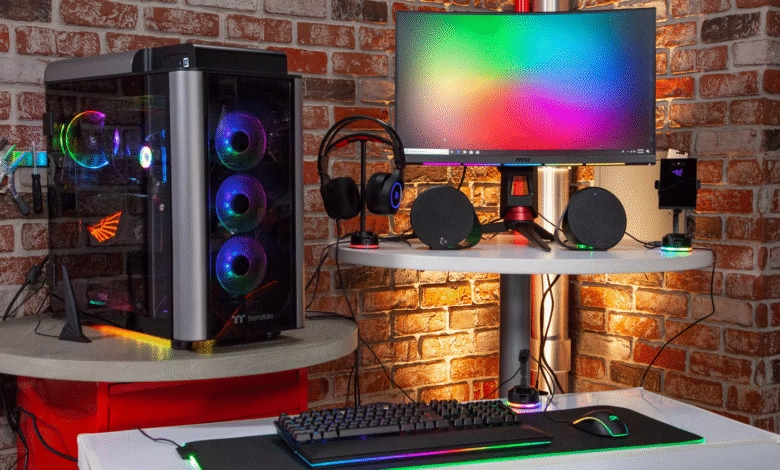Peak RGB Is Over, but Stealth PCs Aren’t Winning Yet

▼ Summary
– MSI’s X99A Godlike Gaming motherboard introduced RGB lighting a decade ago, revolutionizing PC customization compared to older single-color CCFL lights.
– RGB lighting expanded rapidly, appearing in motherboards, peripherals, and even hidden components like PSUs, peaking during the pandemic with glass-case trends.
– Despite early skepticism, RGB became ubiquitous, though detractors criticized its impact on performance and the complexity of controlling multiple RGB software systems.
– Recent trends show a decline in RGB dominance, with more motherboards and cases omitting built-in lighting, signaling a shift past “peak RGB.”
– A new trend of replacing RGB with small screens is emerging, seen in components like AIO coolers, fans, and RAM, hinting at the next wave of PC customization.
The era of flashy RGB lighting dominating PC builds may be winding down, but the shift toward minimalist designs hasn’t completely taken over yet. A decade ago, customizable motherboard lighting felt revolutionary compared to the limited options of cold-cathode fluorescent tubes. What started as a niche feature quickly exploded into an industry-wide phenomenon, with RGB spreading to keyboards, fans, SSDs, and even power supplies.
Early adopters remember when changing a PC’s internal lighting required physically swapping out rigid CCFL tubes secured by unreliable adhesive. The ability to adjust colors via software felt groundbreaking. Manufacturers quickly capitalized on this demand, with brands like Gigabyte’s Aorus line pushing increasingly elaborate lighting schemes. By 2018, RGB had infiltrated nearly every component, from mouse pads to headsets, often in places where the lighting wasn’t even visible during normal use.
The trend peaked during the pandemic, when “fishbowl” cases with multiple glass panels became the standard for showcasing elaborate RGB setups. Hyte’s Y60, with its three-sided glass design, epitomized this movement, encouraging builders to go all-in on lighting. Even power cables got the RGB treatment, with Lian Li’s Strimer V2 turning basic wiring into a glowing spectacle.
Not everyone embraced the RGB craze. Performance-focused users criticized the added cost, heat, and unnecessary complexity. Many found themselves wrestling with multiple buggy software suites just to disable unwanted lighting. While solutions like SignalRGB and Microsoft’s Dynamic Lighting attempted to streamline control, they often fell short of expectations.
Recently, however, subtle signs suggest a shift. More high-end motherboards are launching without integrated RGB, and case manufacturers like Lian Li and Fractal Design now offer models with no lighting at all. Even Hyte, a brand synonymous with RGB-heavy designs, unveiled its X50 case at Computex 2025 with bold colors but no internal lighting, a clear departure from past trends.
While RGB isn’t disappearing entirely, its dominance is waning. Enthusiasts who prefer clean, understated builds finally have more options. Yet for those who still enjoy vibrant lighting, the industry continues to innovate, just in different ways. The latest trend? Replacing RGB with small displays on components like RAM, AIO coolers, and even cooling fans.
Whether you love or hate RGB, one thing is certain: PC aesthetics are evolving. The days of every component glowing may be behind us, but the next wave of visual customization is already taking shape, this time, with screens instead of LEDs.
(Source: Tom’s Hardware)